
How to Use A-Star 32U4 Mini SV: Examples, Pinouts, and Specs
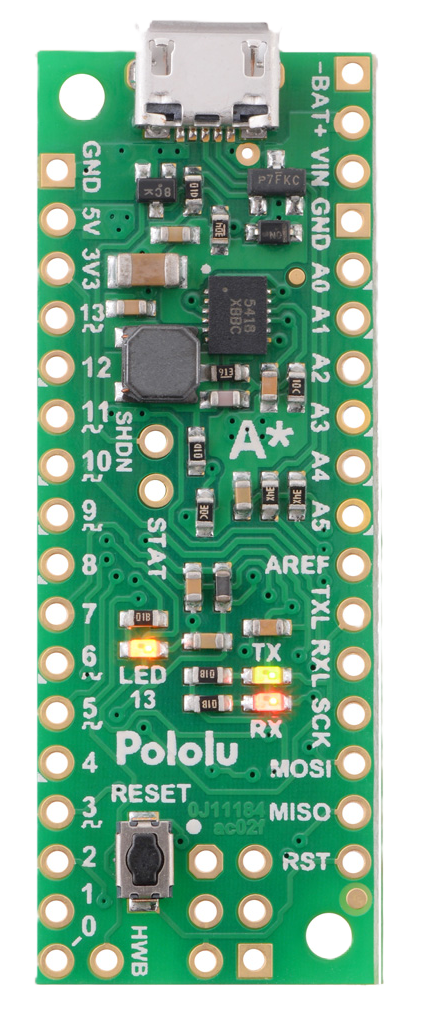
 Design with A-Star 32U4 Mini SV in Cirkit Designer
Design with A-Star 32U4 Mini SV in Cirkit DesignerIntroduction
The A-Star 32U4 Mini SV is a compact and versatile microcontroller board designed and manufactured by Pololu. It is based on the ATmega32U4 microcontroller, which features built-in USB functionality, making it ideal for projects requiring USB communication. The board includes 32KB of flash memory, 2.5KB of SRAM, and 1KB of EEPROM, providing ample resources for a wide range of applications. Its small form factor and robust design make it suitable for embedded systems, robotics, and IoT projects.
Explore Projects Built with A-Star 32U4 Mini SV
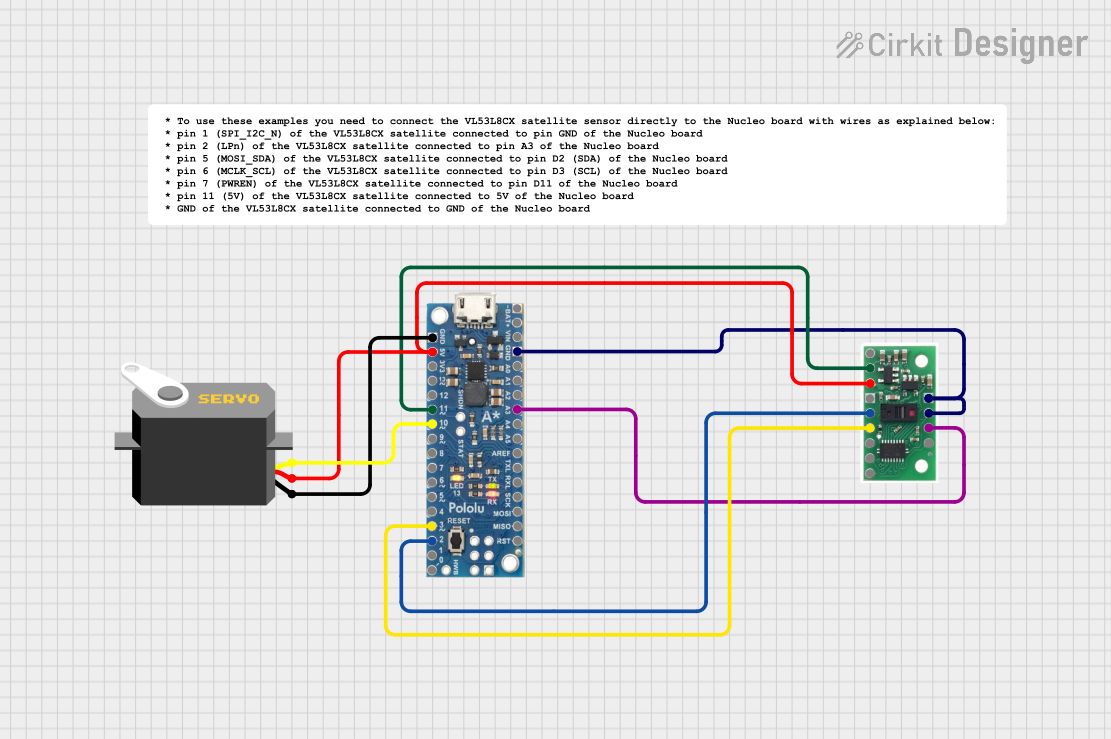
 Open Project in Cirkit Designer
Open Project in Cirkit Designer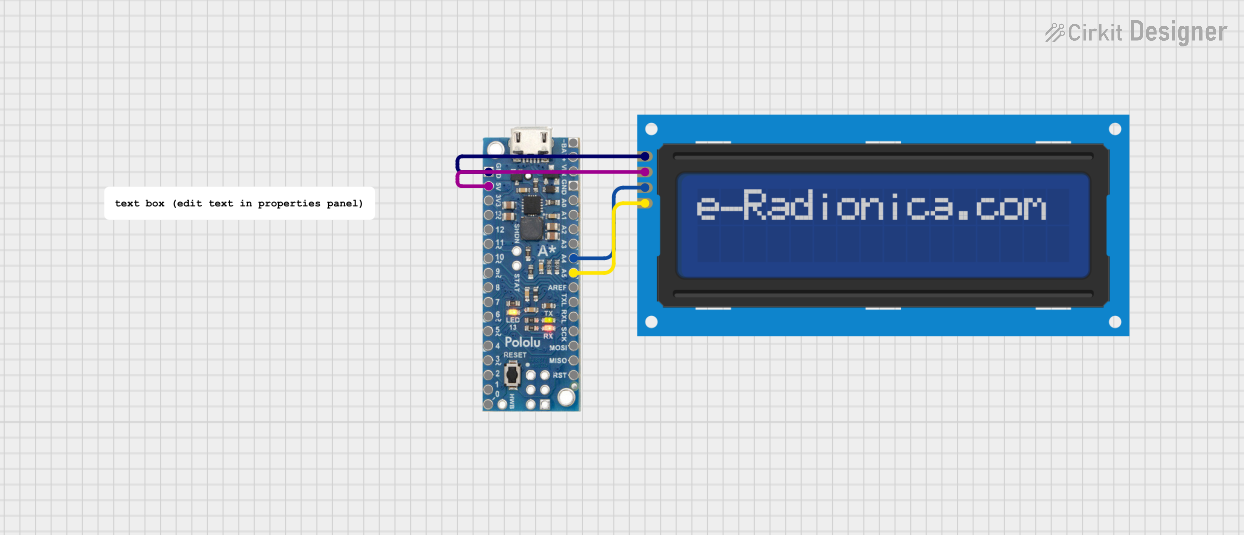
 Open Project in Cirkit Designer
Open Project in Cirkit Designer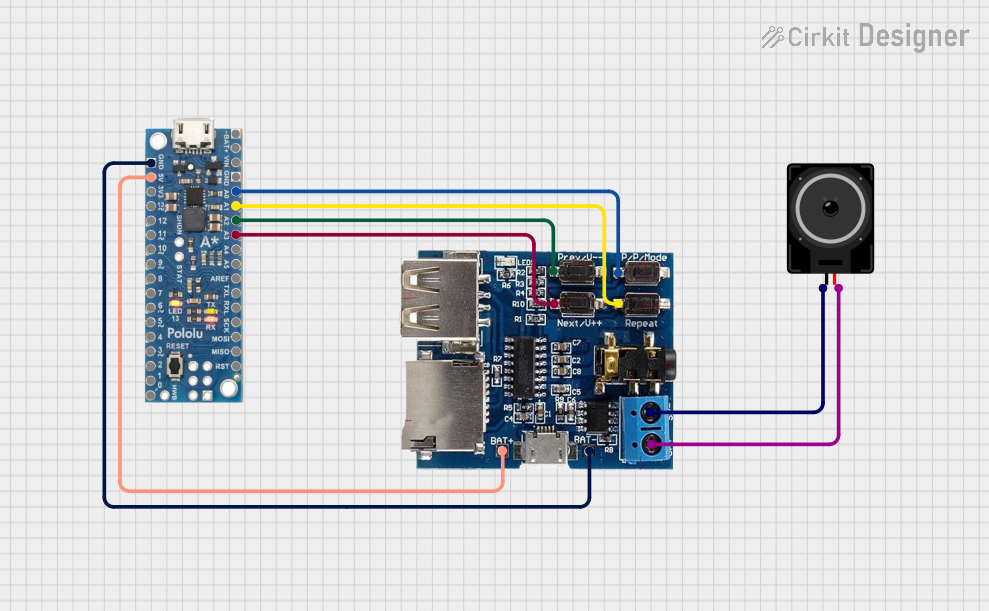
 Open Project in Cirkit Designer
Open Project in Cirkit Designer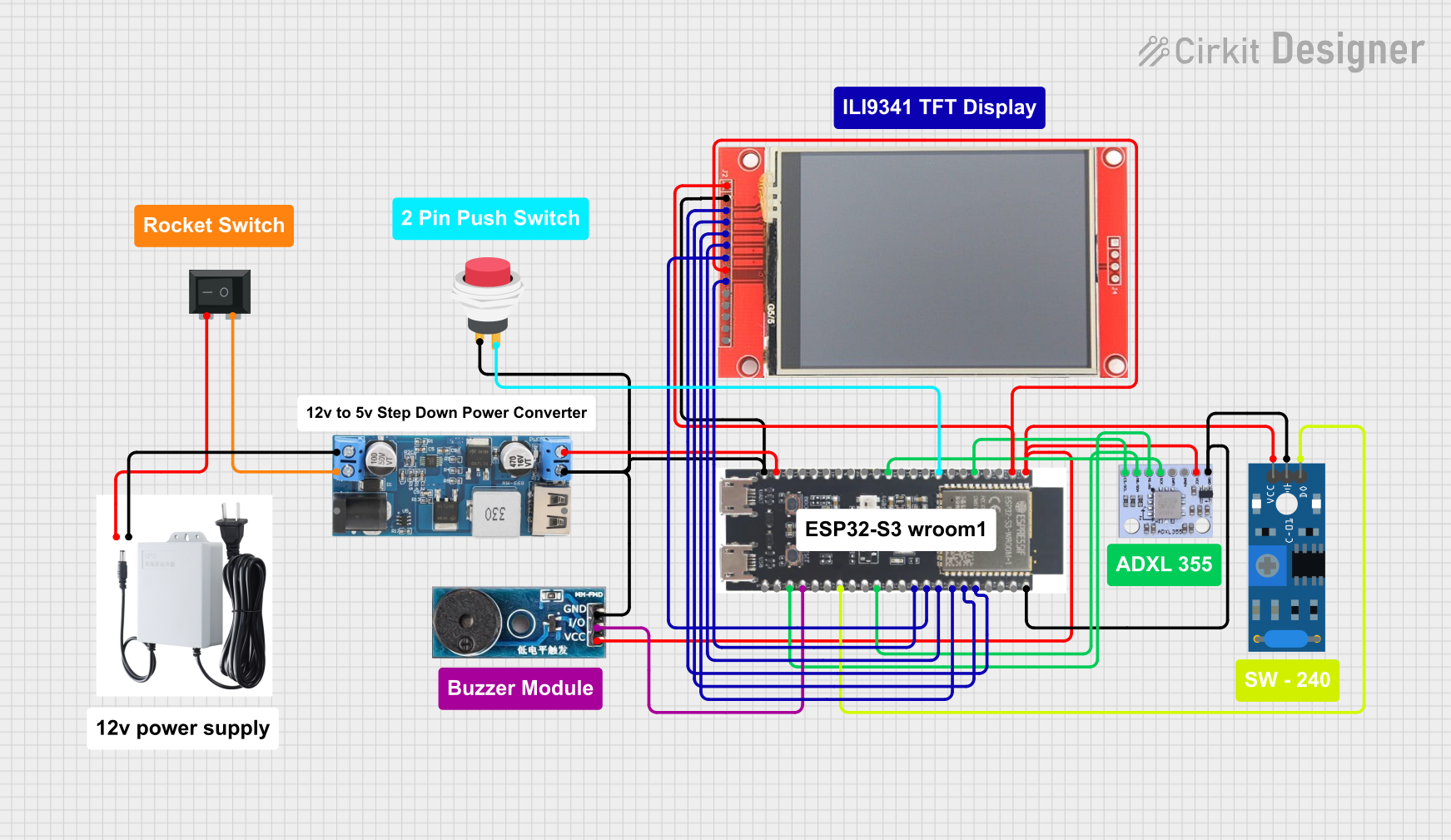
 Open Project in Cirkit Designer
Open Project in Cirkit DesignerExplore Projects Built with A-Star 32U4 Mini SV

 Open Project in Cirkit Designer
Open Project in Cirkit Designer
 Open Project in Cirkit Designer
Open Project in Cirkit Designer
 Open Project in Cirkit Designer
Open Project in Cirkit Designer
 Open Project in Cirkit Designer
Open Project in Cirkit DesignerCommon Applications and Use Cases
- Robotics and motor control
- Sensor interfacing and data acquisition
- USB-based projects (e.g., HID devices, serial communication)
- IoT devices and home automation
- Prototyping and educational projects
Technical Specifications
Key Technical Details
| Parameter | Specification |
|---|---|
| Microcontroller | ATmega32U4 |
| Operating Voltage | 5V |
| Input Voltage Range | 5.5V to 36V |
| Flash Memory | 32KB (4KB used by bootloader) |
| SRAM | 2.5KB |
| EEPROM | 1KB |
| Clock Speed | 16 MHz |
| USB Connectivity | Full-speed USB (12 Mbps) |
| Digital I/O Pins | 26 (7 can be used as PWM outputs) |
| Analog Input Pins | 12 |
| Current Draw (Idle) | ~30 mA |
| Dimensions | 1.9" × 0.7" (48 mm × 18 mm) |
Pin Configuration and Descriptions
The A-Star 32U4 Mini SV features a total of 26 I/O pins, including digital, analog, and power pins. Below is a detailed pinout description:
| Pin Name | Type | Description |
|---|---|---|
| VIN | Power Input | Input voltage (5.5V to 36V). Powers the onboard regulator. |
| GND | Power | Ground connection. |
| 5V | Power Output | Regulated 5V output from the onboard regulator. |
| A0–A11 | Analog Input | 12 analog input pins (can also be used as digital I/O). |
| D0–D13 | Digital I/O | 14 digital I/O pins (7 support PWM output). |
| TX (D1) | Digital I/O | UART transmit pin. |
| RX (D0) | Digital I/O | UART receive pin. |
| SDA | Digital I/O | I²C data line. |
| SCL | Digital I/O | I²C clock line. |
| USB+ | USB | USB data positive line. |
| USB- | USB | USB data negative line. |
| RST | Reset | Reset pin. Resets the microcontroller when pulled low. |
Usage Instructions
How to Use the Component in a Circuit
Powering the Board:
- Connect a power source to the VIN pin (5.5V to 36V) or via the USB port. The onboard regulator will provide a stable 5V output.
- Ensure the input voltage does not exceed the specified range to avoid damaging the board.
Connecting I/O Devices:
- Use the digital pins (D0–D13) for interfacing with digital sensors, actuators, or LEDs.
- Use the analog pins (A0–A11) for reading analog signals from sensors.
- For I²C communication, connect your devices to the SDA and SCL pins.
Programming the Board:
- The A-Star 32U4 Mini SV is compatible with the Arduino IDE. Select "Arduino Leonardo" as the board type in the IDE, as both use the ATmega32U4 microcontroller.
- Connect the board to your computer via USB and upload your code.
USB Communication:
- The ATmega32U4 supports USB communication natively, allowing the board to act as a USB keyboard, mouse, or serial device.
Important Considerations and Best Practices
- Voltage Levels: Ensure that all connected devices operate at 5V logic levels to avoid damaging the board.
- Current Limitations: The onboard regulator can supply up to 1A. Ensure the total current draw of connected devices does not exceed this limit.
- Heat Dissipation: If operating at higher input voltages (e.g., 36V), the regulator may generate heat. Consider adding a heatsink or reducing the input voltage if necessary.
- Bootloader: The board comes preloaded with a bootloader, so no external programmer is required.
Example Code for Arduino UNO
Below is an example of how to blink an LED connected to pin D13:
// Blink an LED connected to pin D13
void setup() {
pinMode(13, OUTPUT); // Set pin 13 as an output
}
void loop() {
digitalWrite(13, HIGH); // Turn the LED on
delay(1000); // Wait for 1 second
digitalWrite(13, LOW); // Turn the LED off
delay(1000); // Wait for 1 second
}
Troubleshooting and FAQs
Common Issues and Solutions
The board is not recognized by the computer:
- Ensure the USB cable is functional and supports data transfer (not just charging).
- Check that the drivers for the ATmega32U4 are installed correctly.
Unable to upload code:
- Double-check that "Arduino Leonardo" is selected as the board type in the Arduino IDE.
- Press the reset button on the board just before uploading the code to enter the bootloader mode.
Overheating regulator:
- Verify that the input voltage is within the specified range (5.5V to 36V).
- Reduce the current draw of connected devices if the regulator is overheating.
I²C devices not working:
- Ensure pull-up resistors (typically 4.7kΩ) are connected to the SDA and SCL lines.
FAQs
Q: Can the A-Star 32U4 Mini SV be powered via USB?
A: Yes, the board can be powered via USB, which provides 5V directly to the microcontroller.
Q: What is the maximum current output of the 5V pin?
A: The 5V pin can supply up to 1A, depending on the input voltage and heat dissipation.
Q: Is the board compatible with Arduino libraries?
A: Yes, the A-Star 32U4 Mini SV is fully compatible with most Arduino libraries, as it uses the ATmega32U4 microcontroller.